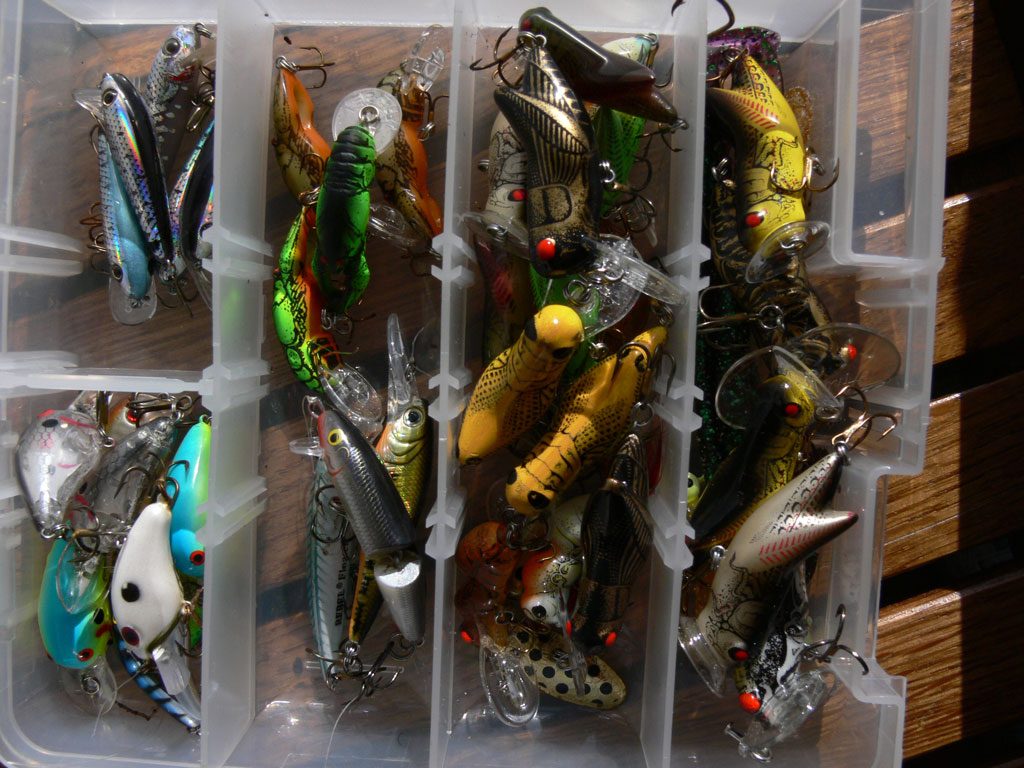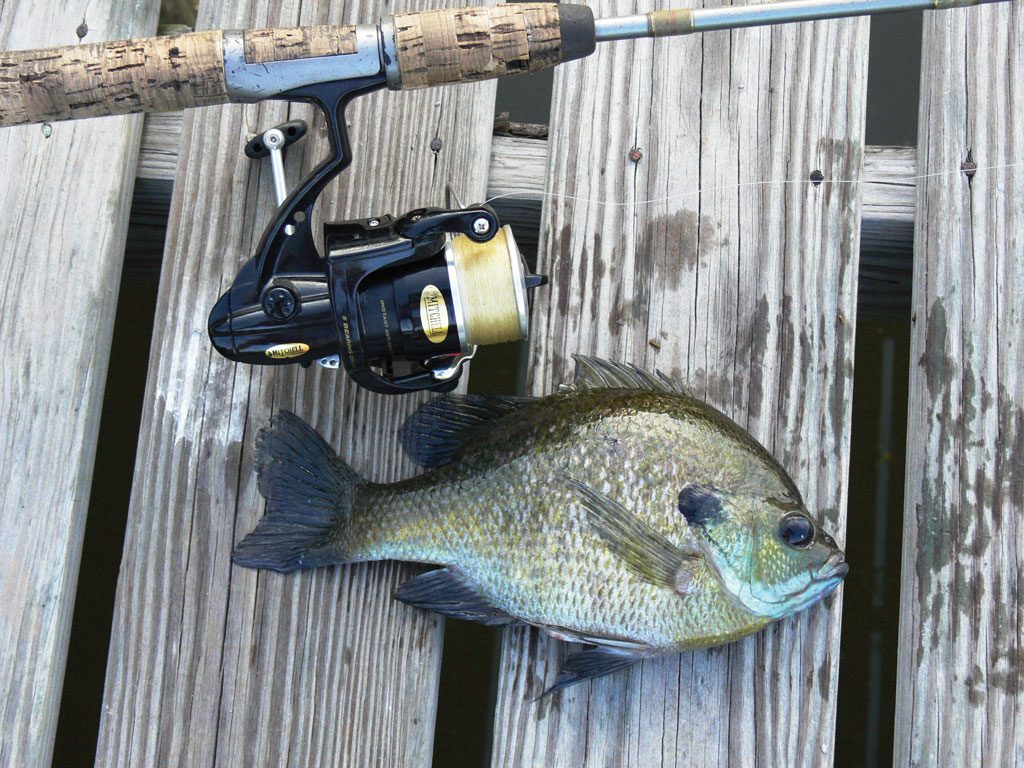The Best Bream Lures and Equipment For Success
It doesn’t make sense to carry a 30.06 deer rifle when we go squirrel hunting. It doesn’t make sense to use a sledgehammer to kill mosquitoes. For most activities, there’s a suitable form of equipment which just works better and is more effective. The same is true when it comes to panfish fishing. Anglers need the best bream lures and fishing equipment to make their trips successful.
Even though panfish are often willing to bite an angler’s big bass lure (and sometimes even get hooked on it). But when it comes to gathering up a big stringer of bream or crappie for a fish fry, using the proper size of line, rod and lure makes the job much more effective. And let’s be honest—a whole lot more fun.
It just makes sense for anglers who are looking for some big-time fun and some big-time good eating to use smaller, lighter equipment for panfish.
Line-Light, but Strong
It’s not uncommon for anglers using heavy bass gear with heavy bass line to have bream hit lures or bait intended for much bigger fish.
However, for best results, lighter line will work better, and when the biggest bream in the pond are the target, light line is necessary. Those big bull bream don’t get big by being totally dumb, and they notice the heavier line and avoid it.
For best results, lighter line will work better, and when the biggest bream in the pond are the target, light line is necessary. I use 6 lb test line when I head to the local bream pond. This line allows me to use small lures and still be able to make long casts, which can sometimes be crucial when trying to catch bigger bream.
Most crappie specialists use light line. Captain Brad Whitehead says, “On my ultra-light rigs, I use Lakefork Tackle brand 6 lb line in the yellow-orange color.”

Bream are in every freshwater system in Alabama and anglers can have fun with them wherever they’re found.
It’s possible to go as light as 4 lb test for panfish, and probably the fish bite a little better on such thin line. But, like most anglers here in Alabama, I always worry about hooking a really big fish on such tiny line. I stick with 6 lb stuff, which gives me at least a chance in case a great big bass hits my bream fishing lure.
Rods—Get One That Works with the Line and Reel
Matching light line to lighter rod just makes sense. The light line casts farther and can be felt better as it moves though the water if a lightweight rod is used.
For my bream and crappie fishing, I use a little five-foot-long ultralight rod that is designed and built to handle 6 lb test line. I catch big pond bream, and during the spring I use my little short ultralight rod and reel for trolling in big lakes for crappie.
Not only does the little light rod work better with the light line, it makes just about any respectable bream or crappie feel like a big one.

A fly rod and some big shell crackers- a whole lot of fun.
This winter I used my little panfish rig at Weiss Lake where I trolled small jigs along a creek channel and had some great cold weather crappie action. My super-lightweight rod allowed me to feel every little tap from lightly-feeding crappie, and I put my share of slabs in the cooler.
Many crappie anglers use very long rods when they are trolling—some are 14 feet long— but these specialty rods are made to work best with light line; 6 to 10 lb test usually. So, even though these crappie rods look big and bad, they are designed with light line and small lures and baits in mind.
Captain Brad uses a five-foot-five-inch long B’n M’ Sharpshooter rod for dock shooting when he flips jigs far up under docks where crappie hold in the shade. He uses the same rod and line for shellcracker bream fishing, but he scales down the size of the jigs even smaller—1/32 oz sometimes for the big redears.
Reels—Small but Not a Toy
Although the rod and line used for panfishing are important, having the right reel in the mix may be the most important element of the whole setup.
There are a lot of little spinning reels offered for sale, but many of these small reels are little more than toys. Poorly made and designed ultralight reels will twist and kink monofilament line after just a few casts, and this can make fishing for panfish a real pain. Also, many cheap, small reels have poor drag systems. A good drag can be very important when a big bass hits a lure intended for a hand-sized bream.
My favorite ultralight panfish reel is a Mitchell S2000 loaded with 6 lb line. This reel holds 175 yards of 6 lb test, which is plenty, and the reel does not twist and kink light line. I can make long casts with a tiny panfish lure, and the light weight of the line allows me to detect the slightest little nudge by a feeding bream or crappie.

Lure companies are building a wide range of mini-lures for panfish.
Lures for Panfish
This is where panfish fishing gets fun. There’s nothing wrong with using a can of garden worms or a tube of crickets to collect a mess of panfish for supper, but there’s something special about using tiny artificial lures to catch a mess of panfish. Panfish just seem to hit little artificial lures extra hard.
The classic artificial lure for crappie is a jig. Especially in early spring, crappie love to hit tiny 1/32 oz jigs that are slow-trolled through their area. By putting two or even three of these tiny jigs on a single line with lightweight equipment, an angler can prospect and cover a lot of water quickly to locate the best concentration of crappie. You may have to experiment to find out what color combinations the crappie want in the tiny jigs, but it’s a good idea to start out with black and chartreuse.
Captain Brad Whitehead recommends small tube jigs made by Southern Pro lures. He says, “You may have to experiment to find out what color combinations the crappie want in the tiny jigs, but it’s a good idea to start out with black and chartreuse.”
Although no one will claim crappie fight as hard as a bream or bass, when two big slab crappie take a couple of jigs on the same lightweight line, they can put a good bend in a crappie angler’s rod.

The biggest bream are willing to crash bass crankbaits.
Lure manufacturers have caught on to the expanding panfish ultralight lure market, and most lure builders have a full line of tiny spinners, jigs, and even crankbaits designed to catch panfish.
My favorite bream fishing lure is a tiny crankbait. These little lures float at rest (that’s where the bream will often strike them) and the lure runs about a foot below the surface on retrieve. Bream in particular love to follow a little crankbait and then take it when the angler allows the lure to halt and float to the surface.
Many savvy crappie anglers troll smaller crankbaits over open water for crappie after the spawn is over. A crappie angler may have six or eight crankbaits on separate rods, all working a troll at the same time. Using different color and depth mini-crankbaits allows the crappie angler to pinpoint the depth the crappie are holding and the color lure they prefer. Big crappie can be very picky at times.
Don’t Forget the Long Rod
So far, we’ve assumed that panfish anglers will be using spinning gear for ultralight panfish fishing, but we can’t forget the fly rod. Panfish and fly rod equipment go together perfectly, but most fly rod anglers use the same rig for panfish that they use for bass— usually 7 or 8 wt rods. This is fine, but for more fun than the law should allow, fly rod folks need to gear down, too.
I bought a 4 wt rod this spring, and I’ve been using it exclusively for bream fishing trips. I have had a ball. This mini-fly rod allows me to cast small poppers and sinking flies, and when a bream hits on a lightweight fly rod, it feels like a runaway train.
A 4 wt fly rod will allow any bream to put on a good show, and those big old black spawning bull bluegill will bend a 4 wt rod way over as they fight against the pressure of the line.
I have to use smaller popping bugs, and the smaller dark sinking flies—the pattern really doesn’t matter—have been very effective when used on the lightweight fly rod. Fly rodders who are not used to 4 wt and lighter equipment will want to spend a little time practicing.
The shorter, lighter rods load up and throw the line a bit differently than the heavier weight stuff. The best place to practice fly-casting of any kind is over a bed of bream in shallow water. The bream are usually very willing to hit poppers and flies, even if the cast is not perfect.

Gear down for fun with panfish and catch more.
And What if the BIG One Comes Along?
Many anglers are hesitant to use ultralight gear for panfish fishing because the rods and other gear look so flimsy and inadequate compared to regular bass gear, and they worry about hooking and losing a big bass on ultralight equipment.
Big bass do hit little tiny bream fishing lures and live bait intended for crappie. When they do, just hang on, let the fish pull, and hope everything stays together.
Let me tell you a true story. This spring I was catching bream for photos for this article. I’d caught a couple of nice, fat, aggressive bull bluegill on a little crankbait. I had been having a good time catching these feisty little battlers on suitably-sized tackle.
“Be patient. You’re dealing with smaller tackle.”
I made a cast toward a shoreline, and on the retrieve my little crankbait just stopped. When the line began to melt off my reel, I figured out quickly that this was not a bream. When a very good bass jumped high out of the water a couple of times, I knew I was in for a fight.
To make a pretty long and very interesting story short, I caught that bass and she went right at seven pounds. I had to take my time with such a nice fish on such light gear, but by letting the fish run and not trying to horse her in, I was able to bring her to hand. I felt that catching a seven pounder was not too bad a job on 6 lb line.
So, when a big one shows up where it’s not supposed to be, with good quality ultralight panfish gear, it’s very possible to magically change the panfish gear into bass gear.
Captain Brad Whitehead has some pretty good advice for us when we scale back on our equipment for panfish fishing. “When you gear down, slow down,” he says. “Be patient. You’re dealing with smaller tackle.”
